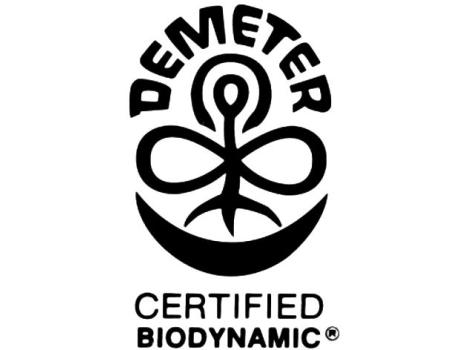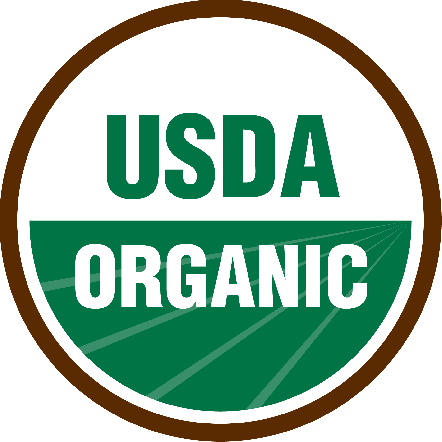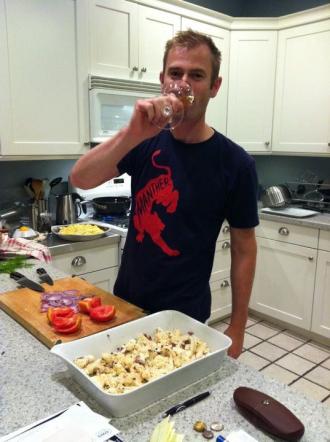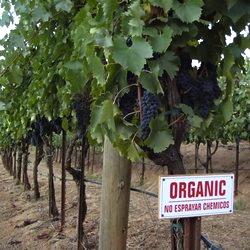In my last post, I wrote about how difficult it is to grow grapes and make wine in an environmentally responsible manner, and how rare organic and biodynamic winemaking remains today.
Now I want to focus on the brighter side: while “green” wine still accounts for a small share of the industry, that share is growing quickly, and it isn’t terribly hard to find wines from makers who are genuinely trying to be responsible environmental stewards.
But first, it’s important to nail down the terminology used by winemakers to indicate environmentally friendly juice.
Organic
The term “organic” is set in the United States by federal law and regulated by the Department of Agriculture. (The EU’s organic regulations are very similar, though not identical.) In general, it means that no chemical pesticides or fertilizers can be used in the vineyard — pests are controlled by organic materials like mineral oil sprays, and fertilization is provided by organic fertilizers, compost, and cover crops. However, there is some tricky wordplay involved in organic wine:
“Made with Organic Grapes” is the most common phrase used on bottles, but it is also the least stringent and the most misleading. Most consumers would probably take this term to mean that they’re getting an all-organic wine, but it only means that at least 70 percent of the grapes used are organic. The other 30 percent can be farmed conventionally.
The phrase “Made with 100% organic grapes” or an ingredients list that simply reads “Ingredients: Organic grapes” means that all of the grapes used were farmed organically. Any additives in the bottle (other than sulfur) must generally be organic, and if there is an ingredients list, they must be included in the list.
The simple phrase that you would expect to be on the bottle, “Organic Wine,” is in fact rarely used, because under the USDA regulations a bottle with that label not only has to contain at least 95 percent organic grapes, but it also cannot contain any added sulfur to stabilize and protect the wine; very few winemakers make unsulfured wine.
Practicing Organic
This term indicates that the grower generally follows the USDA or EU rules for organic agriculture, but is not certified organic. It typically indicates either that the producer does not want to spend the money to become certified, or that it is on the road to certification, which can be a years-long process. However, it is important to bear in mind that there is no firm definition for the term “practicing organic,” and no governmental or private authority backing it up. You simply have to take the producer’s word for it.

Biodynamic
Biodynamic grape growing has become popular in recent years, but it has been around since the 1920s; in fact, biodynamic concepts were the inspiration for the organic movement. Biodynamic practices are similar to organic practices in many ways — most importantly, the avoidance of chemical fertilizers and pesticides.
But biodynamics differs from organic farming in its basic philosophy: it treats the farm or vineyard as a self-sustaining entity, maintaining an ecological balance using only materials grown or found on site. This means fertilizing only with compost and manure from the farm, battling pests and disease mainly by encouraging predator species (and species diversity in general), and enhancing soil health with cover crops. The term “biodynamic wine” (as opposed to “made with biodynamic grapes”) extends this philosophy to the cellar, banning any additives except for small amounts of sulfur and prohibiting most common types of winery manipulation, like concentrating the juice or adjusting acid levels.
More controversially, biodynamics has a strong mystical/spiritual element. It requires that certain vineyard and winery processes be timed to coincide with the phases of the moon, and it prescribes dozens of odd-sounding practices and “treatments” that are supposed to transmit “cosmic forces” into the soil. For example, one annual requirement is to fill a deer bladder with yarrow blossoms, bury it over the winter, and retrieve it in the spring.
Biodynamic certification is primarily done by Demeter International, a worldwide consortium of biodynamic farmers that enforces strict standards. Another certifying body, Biodyvin, is used mainly in France.
Sustainable
This is the most nebulous of the terms you will see on a bottle of wine. In general, “sustainability” focuses less on vineyard practices and more on other elements of winemaking that affect the environment, like energy consumption, water usage, and carbon emissions.
These are worthy goals, but everyone has a different definition of exactly what “sustainable” means, and there are no laws or regulations governing “sustainable” winemaking. Instead, there are a number of different privately-run certification programs, each with their own definitions and requirements. The largest such program in the United States, Certified Sustainable California Winegrowing, is run by a consortium of wine industry behemoths, and it has been criticized for its low standards and lack of any enforcement mechanism.

Other programs have more teeth; but in the absence of a coherent national (or, better yet, international) accrediting standard for sustainable winemaking practices, the term doesn’t mean much unless you are willing to delve deeply into each individual accreditation — something the vast majority of consumers are understandably not willing to do.
There are a couple of broad, useful tips in looking for environmentally-friendly wine:
Start with the European sections of the store. The French and Germans were early adopters of organic and biodynamic vine growing, and France, Italy and Spain each have 10 times the number of organic and biodynamic vineyards as the United States. Several large French and German producers that you are likely to see even in a non-specialty wine shop in the U.S. are completely biodynamic, including the likes of Chapoutier, Zind-Humbrecht, Domaine Leflaive, and Robert Weill.
Maddeningly, many European producers do not mention their certifications anywhere on their wine labels or in their sales literature. Some simply do not see the certifications as an effective marketing tool. Some don’t want to undertake the paperwork involved in getting U.S. organic certification. Others have a personal philosophy that proper land use should be the norm, not an unusual thing to be trumpeted.
If you are going to go by defined terms and certifications, it’s important to look at the actual phrases on the label. On a visit to a winery or its website, you may be told about how the winery is organic or biodynamic, but that claim often extends only to the vineyards the winery actually owns. Many big wineries make most of their wine from purchased grapes. You have to look at the bottle in your hand.
Get to know a retailer who is as serious about organic and biodynamic wine as you are. There are a number of shops, at least in large American cities, that specialize in responsibly grown wine. Even if you can’t find a specialist shop, a good wine retailer should be able to tell you who is actually practicing sustainable methods and who is merely greenwashing.
Of course, the most important factor in getting more environmentally sustainable wines on store shelves is you. Wine producers are in business mainly to sell wine and make money doing it. Unless there is a strong and vocal public demand for wines that are farmed and produced responsibly, the producers won’t put the effort into changing their practices. If you care about the environmental impact of your wine, it’s time to put your green where your mouth is.
 Mike Healan grew up in a teetotaling family, and had his first taste of booze — a Bartles & Jaymes wine cooler — at age 22. He has spent the years since then making up for lost time. After fifteen years making people miserable as an attorney, he is now doing penance by making people happy in the food and beverage business. When not immersed in the world of wine, he enjoys world travel, staring contests with his dog, and eating copious amounts of cheese. He writes from the SGT East Coast regional headquarters in Boston.
Mike Healan grew up in a teetotaling family, and had his first taste of booze — a Bartles & Jaymes wine cooler — at age 22. He has spent the years since then making up for lost time. After fifteen years making people miserable as an attorney, he is now doing penance by making people happy in the food and beverage business. When not immersed in the world of wine, he enjoys world travel, staring contests with his dog, and eating copious amounts of cheese. He writes from the SGT East Coast regional headquarters in Boston.

